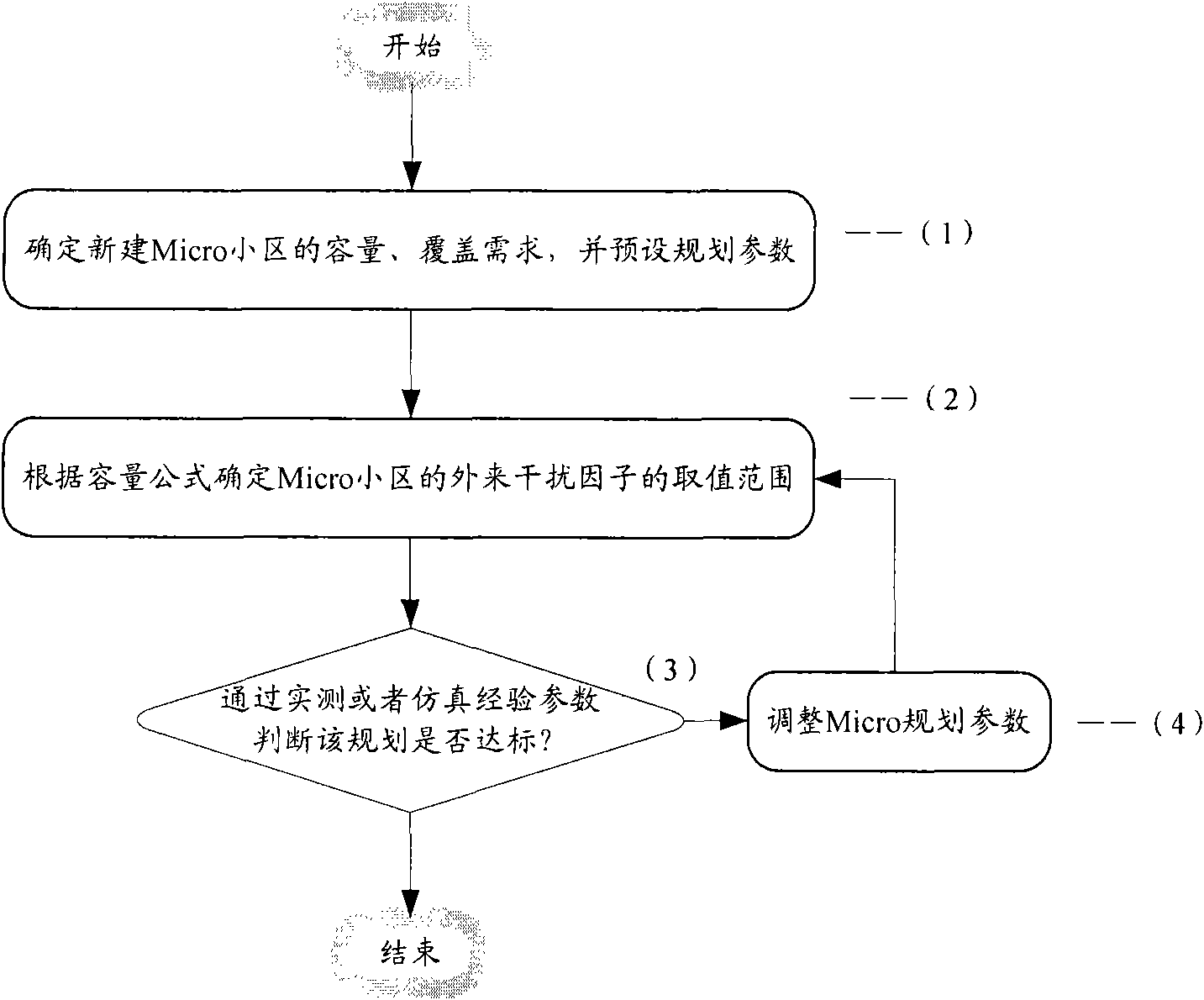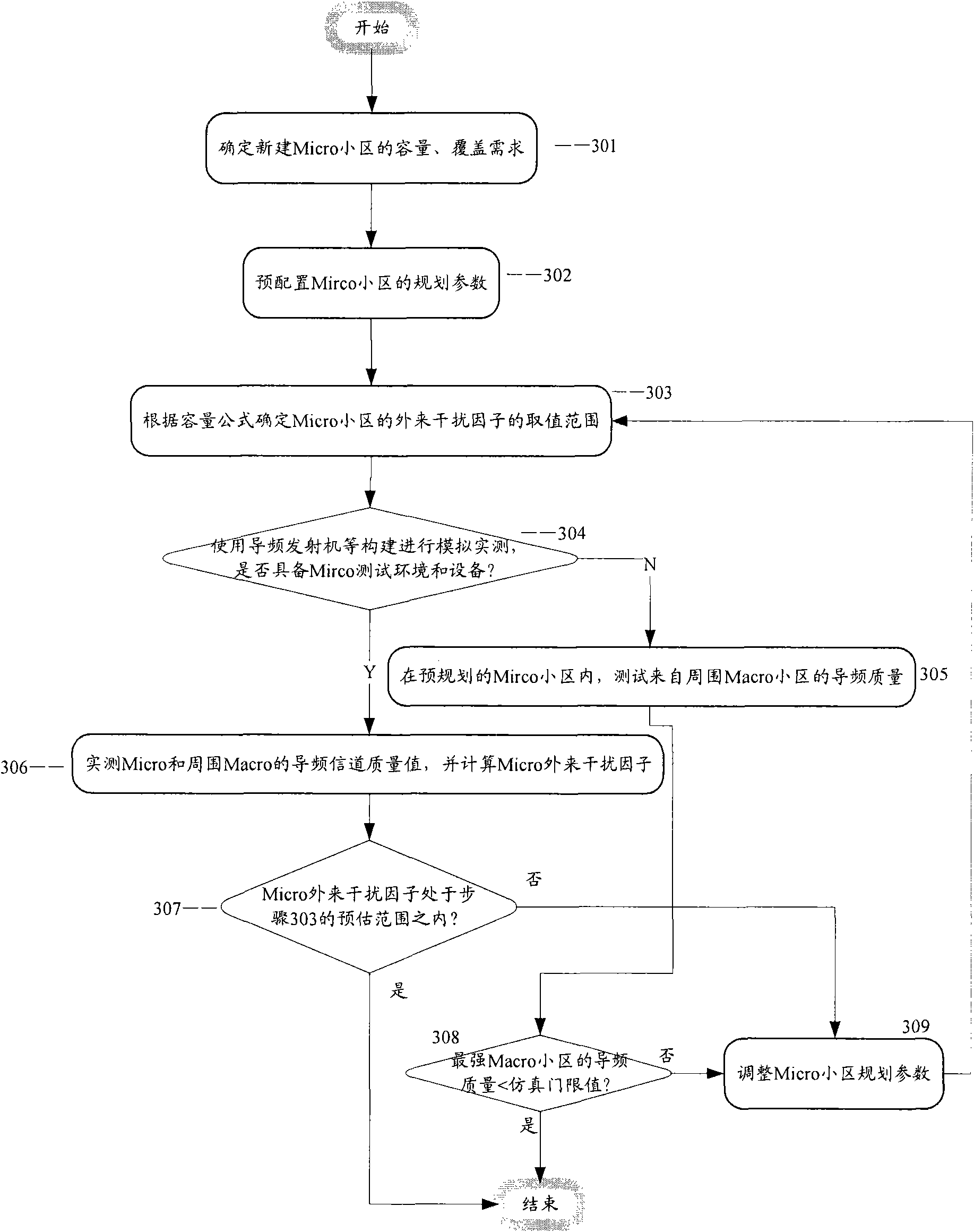Planning method for micro district construction
A micro-cell and planning technology, applied in the field of communication, can solve problems that consume a lot of manpower and material resources, and achieve the effect of convenient planning
- Summary
- Abstract
- Description
- Claims
- Application Information
AI Technical Summary
Problems solved by technology
Method used
Image
Examples
Embodiment 1
[0035] In this embodiment, a method for planning micro cell construction is provided, which is applied to a scenario where a micro cell is added to a network covered by a macro cell.
[0036] Such as figure 1 As shown, the planning method for micro-cell construction according to this embodiment includes: step S102, determining the first pilot signal-to-noise ratio parameter of the micro-cell and the first external interference factor when the micro-cell does not perform pilot transmission; step S104, in the case that the micro cell performs pilot transmission, measure the second external interference factor of the micro cell, and compare the first external interference factor with the second external interference factor; step S106, the pilot transmission cannot be performed in the micro cell In the case of , measure the second pilot signal-to-noise ratio parameter of the macro cell, and compare the first pilot signal-to-noise ratio parameter with the second pilot signal-to-noi...
Embodiment 2
[0066] In this embodiment, a method for planning micro cell construction is provided, which is applied to a scenario where a micro cell is added to a network covered by a macro cell.
[0067] Such as Figure 4 As shown, the planning method for micro-cell construction according to this embodiment includes: step S402, obtaining the first external interference factor of the micro-cell according to the predetermined system parameters of the micro-cell when the micro-cell does not perform pilot transmission; step S404, Under the situation that the small cell carries out pilot frequency transmission, measure the second external interference factor of the small cell; Step S406, compare the first external interference factor with the second external interference factor, and judge whether the small cell reaches joining according to the result of the comparison Requirement in networks covered by macro cells.
[0068] Wherein, the first external interference factor is determined by the ...
PUM
 Login to View More
Login to View More Abstract
Description
Claims
Application Information
 Login to View More
Login to View More - R&D
- Intellectual Property
- Life Sciences
- Materials
- Tech Scout
- Unparalleled Data Quality
- Higher Quality Content
- 60% Fewer Hallucinations
Browse by: Latest US Patents, China's latest patents, Technical Efficacy Thesaurus, Application Domain, Technology Topic, Popular Technical Reports.
© 2025 PatSnap. All rights reserved.Legal|Privacy policy|Modern Slavery Act Transparency Statement|Sitemap|About US| Contact US: help@patsnap.com



